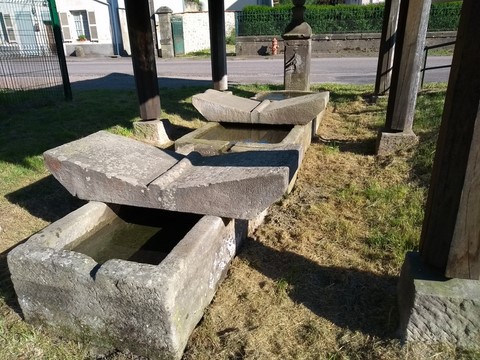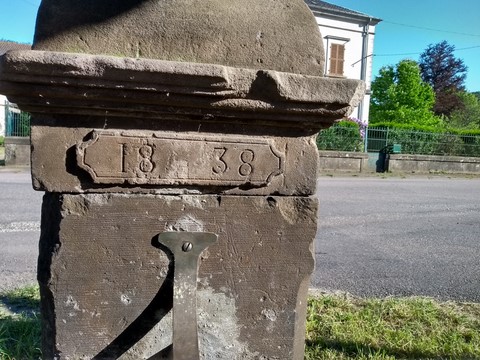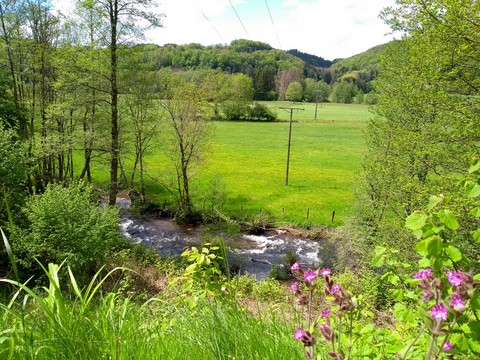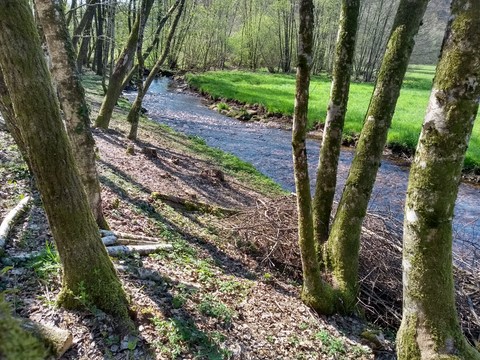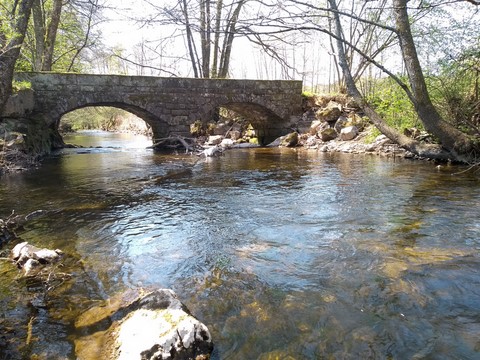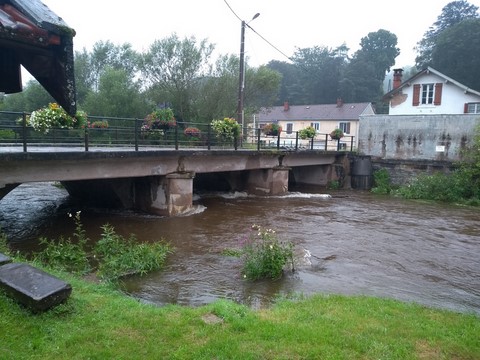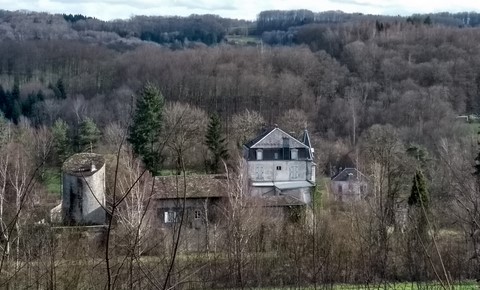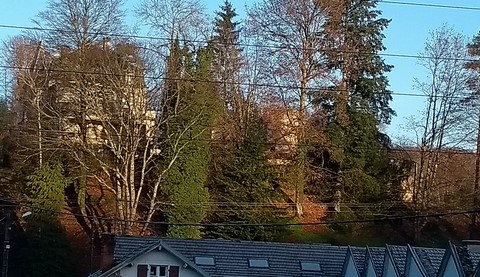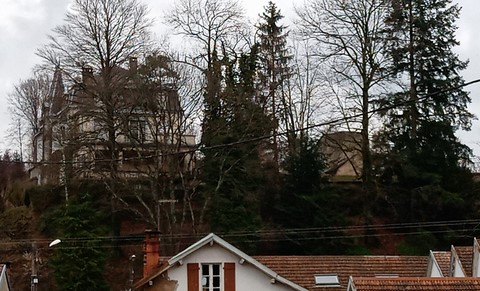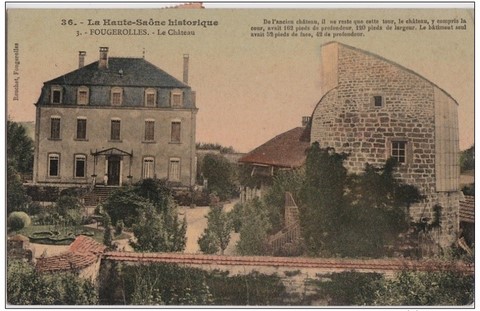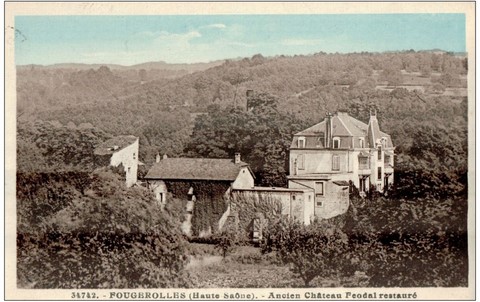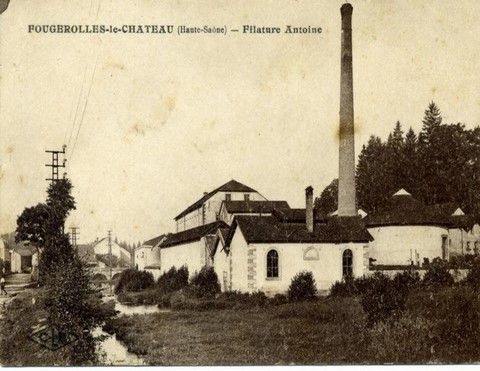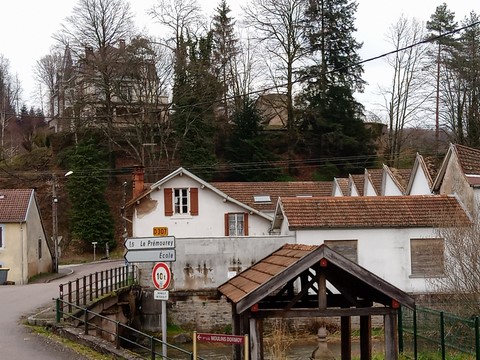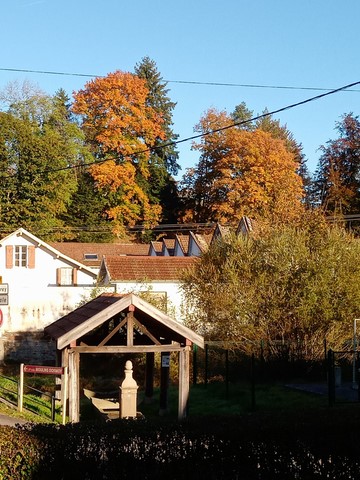a little history
La Fontaine-Lavoir
This fountain-wash was built in 1838.
It was restored in 1920, then a second in 2009.
It belonged to Paul Jacamon, then to his children and grandchildren until 2019 when it will be sold to Mr. and Mrs. Henry.
La Combeauté
La Combeauté is a 37 km river which takes its source in the Hérival forest in the town of Girmont-Val-d'Ajol, in the Vosges, at 670m above sea level, and crosses seven towns before flowing into the Semouse.
The Semouse flows into the Lantern which flows into the Saône, the Rhône then the Mediterranean Sea.
Le Château De Fougerolles
1962 Satellite Photo
The origin of the Castle dates from the 11th century. Around 1050, when the region was covered with a vast forest, Jehan, son of Baron de Faucogney received the lands of Fougerolles, where he built his fortified castle. Around this castel, clearing was established as well as a large garden, and solid dwellings were built below the castle. This is the origin of the name Fougerolles-le-Château which was then more populated than Fougerolles which had only just been born. Mills are built and many trades occupy the inhabitants.
The castle was destroyed several times, through the wars and the revolts of the people.
While the seigneury of Fougerolles and the feudal rights came to an end, around 1824, the castle became a pleasure house where different owners succeeded one another.
In 1875, Alphonse Murbach, son of Joseph Murbach (founder of the spinning mill 22 years earlier) decided to enlarge the castle. In 1904, Auguste Antoine, of Vosges origin, from a textile family for several generations, bought the castle and the spinning mill.
The Antoine family will own the castle until 2020.
The cotton mill (From 1853 to 1991)
On March 23. 1853, Joseph Murbach, who came from Alsace, asked the prefect of Haute Saône for permission to convert the old mill of the Château into a spinning mill.
This mill was located on a bypass of the Combeauté and at the foot of the ruins of the Castle along the medieval road from Fougerolles-le-Château to Plombières-les-Bains. He built a two-storey building where cotton-spinning machines called "rewinders" were mounted. The driving force was originally provided by a wheel on the mill channel, later replaced by a turbine.
He quickly installed a boiler and a steam engine and also bought 4 hectares of land around the spinning mill in 1862. The Murbach spinning mill enjoyed 50 years of prosperity. The two sons Alphonse and Emile Murbach succeeded him in 1865. Despite the difficulties of 1870 (United States Civil War, the only supplier), important achievements were created: new developed canal (600m long), extension of buildings production, maintenance and housing, creation of workers' housing. At that time there were 100 workers and a production of 500 kg of thread per day ... Emile Murbach died in 1898 and Alphonse Murbach in 1903. It was Alphonse's grandson, Maurice Chané who had not only 21, who took over the family business.
But the context of modernization of the equipment to adapt the company to new techniques became a big issue, so he proceeded to the sale of the industrial complex ... In 1904, Auguste Antoine, of Vosges origin, from a textile family for several generations, bought this set. The old spinning equipment was replaced, as well as the boilers and the steam engine, then the First World War of 1914-1918 arriving, the women replaced the men left at the front ... New buildings and an extension see the day after 1920 and until 1930. The old Murbach multi-storey spinning mill disappears, giving way to an area of 7000 m2 covered with its jagged roofs (sheds).
In 1925 Marcel Antoine, his son, and Paul Jacamon his son-in-law took over the family business. The Second World War of 1939-1945 arrives and the factory idles during this period, then the buildings are repaired from the traces of the war. In 1947, the spinning mill was linked to the EDF network. In 1971, Jacques Antoine and Pierre Jacamon, became managers of the company, which employs 168 workers and produces up to 160 tonnes per month of various yarns.
After the retirement of its two directors, the spinning mill is acquiring new buyers. But, in a context of the textile crisis, it will definitively cease its activity in September 1991 ...
 English ▼
English ▼ Français
Français

